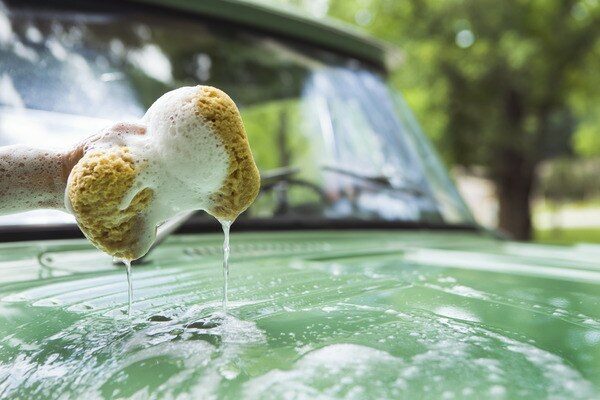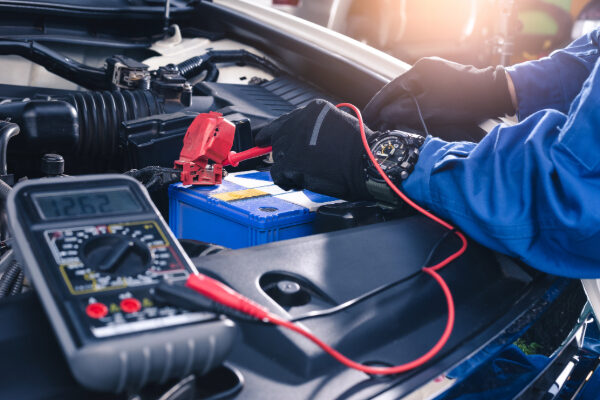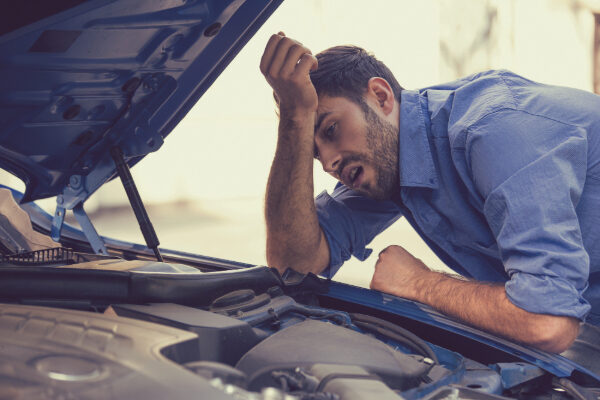
Signs of a windshield leak
Windshield leaks can be a real frustration for drivers. You may be able to recognize some of the common signs of a leak, such as the odor of moisture, fogged-up windows, rust stains or wet carpets or upholstery. But the frustration often stems from not knowing where the water is coming from.
Just because the carpet is wet in the trunk doesn’t mean that’s where the leak is located. Cars can slope, so water can come in from the front floor area and flow through the channels under the carpeting, filling the rear floor area.¹
If this isn’t fixed, the car could develop mold, mildew and rust. For the past 10 or 15 years, manufacturers have been using an underpadding that sends off an odor once it gets wet and results in mold spores. So if you smell an odor in your vehicle, you may have a water leak.¹
What causes water to leak inside a car?
Below are common causes of windshield leaks:
Unnoticed pinhole
One possible source of leaks are unnoticed pinholes in a seam under the molding. While small, this issue can cause big problems.²
Deteriorated rubber gasket
Windshield leaks actually happen less than they used to. Older vehicles may have a windshield that was installed using a rubber gasket. These gaskets can deteriorate and cause a leak.¹
Not sealed properly
Today, manufacturers typically use urethane to install the windshield, making it part of the structure of the body. Still, there can be skips in the urethane, and as a result, you don’t get a good seal. Additionally, if the windshield itself has been replaced at some point, there’s also a chance of it leaking if a proper seal isn’t obtained.¹
Finding windshield leaks
If you haven’t discovered the source of your windshield leak when it rains, you can try one of these tests:
Shower test
Your first option to test for a leak is to gently shower the car with water. For this test, the lower the water pressure used, the faster the vehicle will actually leak. If a hose is put on full force, the water will bounce right off.¹
Soap test
Another option for finding windshield leaks is a soap test. This is especially helpful if you’re also noticing a wind noise in the vehicle, because where wind can get in, so can water. To conduct this test, take soap on a wash mitt and go around the window. Then turn the heater on high defrost. Exit the vehicle and make sure that the windows and the doors are all closed. If you see bubbles coming out, you’ve found your leak.¹
How to fix a leaky windshield
Once you find the leak, it can be relatively easy to make the repair with the right materials. These materials should never include silicone, though, because silicone expands and contracts in the heat and the cold. And once you’ve put it on a seam, you can’t reseal it with the proper sealant because it won’t adhere to the silicone.¹
1. Use seam sealers to fix pinholes
Instead, use special seam sealers that you can buy online. These sealers come out of a tube and can be easily applied. If the pinhole is underneath the molding on your windshield, the molding can be pried up a bit and the seam sealer inserted. It’ll dry in just a couple of minutes, and the molding can be pushed back into place.¹
2. Use a pliable sealant to fix improper seals
If the leak is caused by a skip in the windshield sealant, it is recommended to use something that stays pliable, like a butyl sealant, using an air-caulking gun so that it’s done under pressure.¹
After letting the sealant dry for a few minutes, repeat the water test. If all goes well, you’ll be free of leaks and comfortable in your car no matter the weather.¹
Windshield seal and leak repair
If you’re unable to seal a leaky windshield yourself, it might be time to find an auto glass repair shop to enlist the help of a professional. The windshield leak repair costs can vary based on your location, the make and model of your vehicle and the extent of the work that needs to be done. In some instances, it could be more efficient and economical to just replace the windshield.
Does auto insurance cover windshield leak repair costs?
While the comprehensive coverage offered by many insurance companies does cover water damage due to natural disasters or falling or flying objects (for example, hail or pebbles), it typically does not cover maintenance issues.³ Check your policy to see what’s covered for your car.
Once your windshield is repaired, avoid harsh chemicals when cleaning and keep up with routine maintenance schedules to help prevent leaks in the future. And if you’re experiencing other windshield issues, you can learn more about Nationwide auto glass repair insurance claims to discover more ways we can help.
1 Jim Vandale, owner of Water Doctors International, London, Ontario (Interview, 2017).
2 Jim Vandale, owner of Water Doctors International, London, Ontario (Interview, 2017).
3 “What does car insurance cover?” Anna Swartz and Stephanie Nieves, Policygenius (October 14, 2021).
Disclaimer:
The information included is designed for informational purposes only. It is not legal, tax, financial or any other sort of advice, nor is it a substitute for such advice. The information may not apply to your specific situation. We have tried to make sure the information is accurate, but it could be outdated or even inaccurate in parts. It is the reader’s responsibility to comply with any applicable local, state or federal regulations. Nationwide Mutual Insurance Company, its affiliates and their employees make no warranties about the information or guarantee of results, and they assume no liability in connection with the information provided. Nationwide and the Nationwide N and Eagle are service marks of Nationwide Mutual Insurance Company. © 2022 Nationwide



